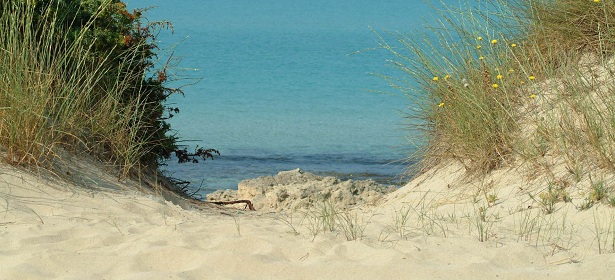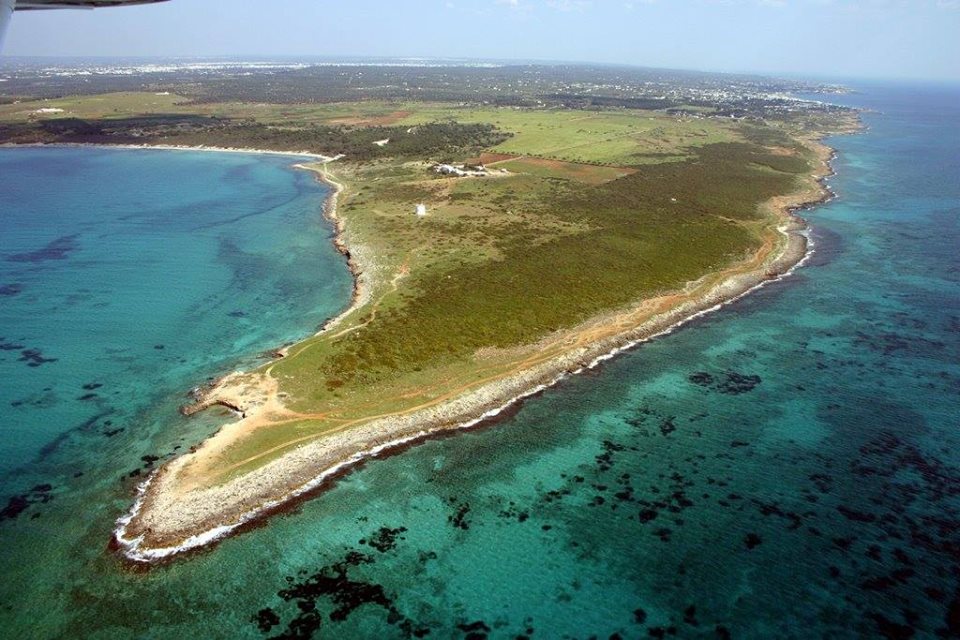
S. Andrea Island Regional Natural Park
This post is also available in:
 Italiano (Italian)
Italiano (Italian)
The island of S. Andrea rises on a flat limestone surface at an average height of about 6.5 ft above sea level. Its rocky coasts offer “priority habitats” such as salty steppes of glasswort and Limonium japigicum, a rare endemic species.
The coast of Punta Pizzo includes several environments such as the Mediterranean scrub, Mediterranean pseudo-steppes, and humid-marshy habitats. This range of different environments favours the presence of variegated flora, featuring strawberry trees (Arbutus unedo), heather trees (Erica spp.), myrtle (Myrtus spp.), rosemary (Rosmarinus), heather trees, Spanish broom, myrtle, wild asparagus, marigolds, blessed thistle, daisies, and orchids (including the very rare Italian orchid).
There are also two very rare shrub legume species: Anthillis hermanniaie, Punta Pizzo it’s the only place where it grows in the Salento peninsula, and bean clover (Anagyris foetida).
Near the humid areas such as the “Li Foggi” Canal and the adjacent marsh areas, grows the rare Ipomea sagittata, favoured by the aquatic avifauna during the migrations.
On the island, there is an internationally-acknowledged and very interesting colony of Audouin’s gulls.
Photo and text source:
This post is also available in:
 Italiano (Italian)
Italiano (Italian)
Contatti
Provinciale 239 - 73014 Gallipoli(LE)
0833 275505
Altre info
L’accesso all’isola di S. Andrea è vietato nel periodo compreso tra il 15 febbraio ed 31 luglio. Nel periodo compreso tra il 1° agosto e il 14 febbraio è consentita la visita dell'Isola esclusivamente dalle ore 7,00 alle ore 17,00 per gruppi di non oltre 20 persone, comprese guide autorizzate e personale di accompagnamento. L'accesso e la visita all'isola, è consentito esclusivamente all'interno dei percorsi esistenti che saranno appositamente tabellati ed indicati. Al fine della salvaguardia delle specie di flora e fauna ittica, a meno di 100 metri dalla linea di costa dell’Isola è vietato l'ormeggio, lo sbarco, il transito, la balneazione e qualsiasi attività subacquea.

